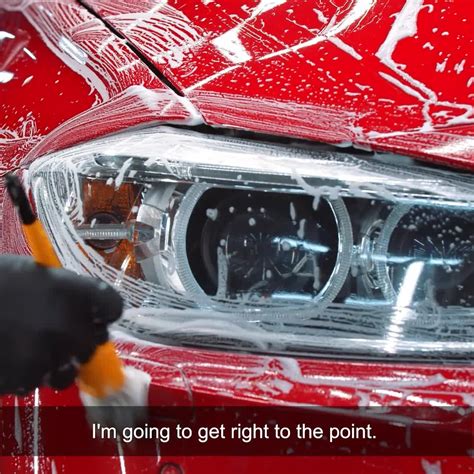Goodbye Water Spots! Restore Your Car's Shine
Water spots. Those pesky blemishes that mar your car's otherwise gleaming finish. They're more than just unsightly; they can etch into your car's clear coat, causing permanent damage. But don't despair! Restoring your car's shine and eliminating water spots is achievable with the right knowledge and techniques. This comprehensive guide will walk you through everything you need to know, from understanding the different types of water spots to the best methods for their removal.
What Causes Water Spots?
Water spots are primarily caused by mineral deposits left behind after water evaporates on your car's surface. Hard water, rich in minerals like calcium and magnesium, is the main culprit. These minerals crystallize as the water dries, leaving behind those annoying spots. The severity of the spots depends on the water's mineral content and how long it remains on the paint.
Types of Water Spots:
-
Soft Water Spots: These are relatively easy to remove and appear as faint, hazy spots. They're usually caused by less mineral-rich water and can often be removed with a simple wash and detail.
-
Hard Water Spots: These are more stubborn and deeply etched into the clear coat. They appear as more pronounced, noticeable spots, sometimes even looking like tiny pits in the paint. Removing these requires more aggressive techniques.
-
Etched Water Spots: These are the most severe type of water spot, permanently damaging the clear coat. They require professional correction or, in some cases, repainting.
How to Remove Water Spots: A Step-by-Step Guide
The method you use to remove water spots will depend on their severity. Here’s a breakdown of techniques for different levels of water spot damage:
1. Washing and Drying:
This is your first line of defense and crucial for preventing spots from becoming worse. Always wash your car thoroughly using a quality car wash soap and plenty of water. Then, meticulously dry your car using a microfiber drying towel, ideally working in small sections to prevent water from beading and leaving spots.
2. Using a Detailing Spray:
For soft water spots, a detailing spray can often be enough. Simply spray it onto the affected areas, let it dwell for a short time, and then wipe it away with a clean microfiber towel.
3. Employing a Water Spot Remover:
For more stubborn hard water spots, a dedicated water spot remover is necessary. These products are formulated to break down mineral deposits. Always follow the manufacturer's instructions carefully, testing it in an inconspicuous area first. You might need to apply the product multiple times and use a polishing pad for best results.
4. Clay Bar Treatment:
If the water spots are relatively light to medium, a clay bar treatment can help remove embedded contaminants, including some mineral deposits. Follow the instructions provided with your chosen clay bar kit.
5. Polishing and Buffing:
For etched water spots, you'll likely need to use a polishing compound and a polishing machine. This process can remove the top layer of clear coat, smoothing out the imperfections. This is best left to experienced detailers, as improper polishing can cause further damage.
Preventing Water Spots: Proactive Measures
Prevention is always better than cure. Here are some tips to minimize the risk of water spots:
- Wash your car frequently: This prevents mineral deposits from building up.
- Dry your car thoroughly: Use a high-quality microfiber drying towel and pay close attention to detail.
- Use a quality car wash soap: This helps to remove dirt and grime effectively, reducing the likelihood of spots.
- Rinse your car with filtered or softened water: If you have hard water, consider using filtered or softened water for rinsing.
- Park your car in a garage: This protects it from rain and other environmental factors that can contribute to water spot formation.
- Apply a sealant or wax: This creates a barrier that helps repel water, reducing the chances of water spots forming.
What is the best way to prevent water spots on my car?
The best way to prevent water spots is a combination of frequent washing, thorough drying, and using a quality car wash soap. Consider using filtered or softened water to rinse your car and applying a protective sealant or wax to repel water. Parking your car in a garage whenever possible also minimizes exposure to the elements.
What are the different types of water spots?
Water spots range in severity from soft spots, which are easily removed, to hard spots requiring more aggressive treatments, to etched spots that cause permanent damage to the clear coat.
How can I remove etched water spots from my car?
Etched water spots require professional-grade polishing and possibly even repainting. Attempting to remove them yourself with improper techniques can lead to further damage. It's crucial to seek assistance from an experienced detailer.
Can I remove water spots myself?
For soft to moderate water spots, DIY removal is possible using detailing sprays, water spot removers, and clay bars. However, for severe etched water spots, professional help is recommended to avoid causing more damage.
By following these tips and choosing the appropriate method based on the severity of the water spots, you can restore your car's shine and keep it looking its best. Remember, patience and attention to detail are key to achieving sparkling results.

